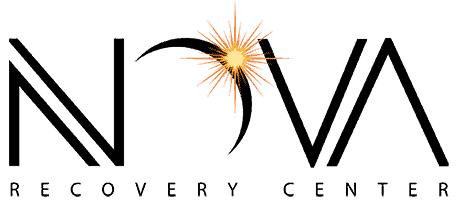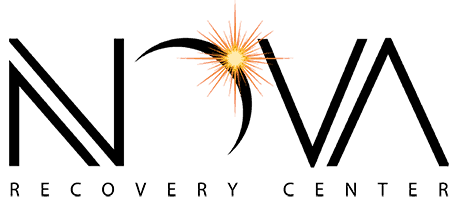Klonopin
Clonazepam (Klonopin) Addiction: Side Effects, Detox, Withdrawal, and Treatment

Table of contents
- What is Clonazepam (Klonopin)?
- Slang for Clonazepam (Klonopin)
- How Common Is Clonazepam (Klonopin) Addiction and Abuse?
- What Are the Side Effects of Clonazepam (Klonopin) Abuse?
- What Are the Signs of Clonazepam (Klonopin) Addiction?
- Clonazepam (Klonopin) Withdrawal Symptoms and Detox
- Clonazepam (Klonopin) Withdrawal Timeline
- Clonazepam (Klonopin) Addiction Treatment
- Inpatient Drug Rehab vs. Outpatient Drug Rehab for Clonazepam (Klonopin) Addiction
- Continued Care Options for Clonazepam (Klonopin) Addiction Treatment
What is Clonazepam (Klonopin)?
Clonazepam is a powerful prescription benzodiazepine and relaxant that is sold under the brand name Klonopin. It is a prescription drug that is used to treat panic attacks, anxiety, and seizure disorders. It works by blocking certain receptors in the brain to induce feelings of relaxation and calmness and reduce feelings of stress and anxiety. Like other benzodiazepines, clonazepam is highly addictive, even if it is taken for a short period of time.
Prescribed in tablet form, the dosage of this drug is based on weight, age, medical condition, and other factors. When taken in high doses or for long periods of time, Clonazepam can cause serious withdrawal symptoms. For this reason, it is intended for short-term use.
Many people may assume clonazepam or Klonopin is a safe drug simply because it’s prescribed by a doctor. However, it can be a very dangerous and powerful drug if it is misused and it should be used with extreme caution. High doses of Klonopin can also cause hallucinations and create strong feelings of euphoria. If it is purposely misused, it can quickly cause dependence, tolerance, and addiction.
Slang for Clonazepam (Klonopin)
The following terms are street names or slang for Clonazepam (Klonopin):
- K
- K-Pin
- Pin
- Super Valium
Clonazepam (Klonopin) vs. Xanax: What’s the Difference?
Clonazepam (Klonopin) and Xanax are very similar drugs in many ways, but they do have a few differences. Both drugs are benzodiazepines that have been approved to treat panic attacks in adults. Although clonazepam has also been approved to treat seizures in children, experts are unsure if Xanax is safe for children.
Both Klonopin and Xanax produce a calming effect in users, by affecting GABA (gamma-aminobutyric acid) levels, a chemical that is naturally found in the brain. The calming effects of Xanax last for a few hours, but the effects of clonazepam (Klonopin) can last up to two or three times longer.
Although the duration of the drugs’ effects differ, the common side effects of both remain the same: lightheadedness and drowsiness.
Both clonazepam and Xanax are Schedule IV drugs, which means they have a relatively low potential for abuse relative to Schedule III drugs.
| Clonazepam (Klonopin) | Xanax |
| Benzodiazepine approved to treat panic attacks in adults Also used to treat seizures in adults and children Schedule IV drug Generic drug (brand name Klonopin) Works by affecting GABA in the brain and producing a calming effect Effects last two to three times as long as Xanax Common side effects are lightheadedness and drowsiness | Benzodiazepine approved to treat panic attacks in adults Unknown if Xanax is safe for children Schedule IV drug Brand name of generic drug alprazolam Works by affecting GABA in the brain and producing a calming effect Effects last for a few hours Common side effects are lightheadedness and drowsiness |
How Common Is Clonazepam (Klonopin) Addiction and Abuse?
Since it is a prescription drug, some people may wonder if clonazepam is addictive. The answer is yes, and many people are suffering from Klonopin addiction in the U.S. right now.
According to the 2017 National Survey on Drug Use and Health, 38,168 Americans reported using prescription tranquilizers like clonazepam and 5,944 Americans reported misusing them in 2017. In addition, more than 75,000 people were admitted to the ER in 2011 due to complications caused by Klonopin.
If high doses of Klonopin are used regularly over a long period of time, the user may develop a tolerance, which can quickly spiral out of control into habits of misuse and overuse. Even if clonazepam is prescribed by a doctor, it should still be used with caution.
What Are the Side Effects of Clonazepam (Klonopin) Abuse?
Side effects of clonazepam abuse include:
- Fatigue
- Depression
- Memory problems
- Constipation
- Nutritional deficiencies
People who abuse clonazepam (Klonopin) are also at high risk for overdose, especially if it is used with other CNS depressants like alcohol. Signs of clonazepam overdose include:
- Severe drowsiness
- Weakness
- Slow heartbeat
- Difficulty breathing
- Confusion or delirium
- Memory loss
- Lack of coordination or convulsions
- Difficulty speaking
- Loss of consciousness
- Coma
What Are the Signs of Clonazepam (Klonopin) Addiction?
It can be difficult to distinguish clonazepam addiction from regular use, as many people who use the drug as prescribed may also develop tolerance or physical dependence. However, there are several distinct signs of addiction.
For example, someone with a mental illness like anxiety or depression may be more likely to develop an addiction to clonazepam. Many people who abuse clonazepam or Klonopin also misuse other substances such as cocaine or alcohol, so other substance use disorders may be a sign of Klonopin addiction.
Other common signs of clonazepam (Klonopin) addiction include:
- Continued use of clonazepam despite physical, emotional, relational, and financial problems
- Developing a tolerance for clonazepam (needing more of the drug to produce the same effects)
- Going to several different doctors to get prescriptions for clonazepam
- Getting clonazepam from a friend or family member
- Isolating oneself and losing interest in prior hobbies and activities
- Wanting to quit using clonazepam but being unable to
- Developing cravings for clonazepam
Clonazepam (Klonopin) Withdrawal Symptoms and Detox
If a person has developed a tolerance to clonazepam, he or she will most likely experience uncomfortable withdrawal symptoms when the effects of the drug wear off.
Some of the most common clonazepam (Klonopin) withdrawal symptoms include:
- Increased blood pressure
- Increased heart rate
- Increased breathing
- Excessive sweating
- Anxiety
- Gastrointestinal problems
- Insomnia
- Hand tremors
- Dizziness
- Memory loss
- Hallucinations
- Seizure
Long-term users of clonazepam may also experience post-acute withdrawal symptoms that persist for weeks, months, or years. These symptoms may include:
- Clonazepam (Klonopin) cravings
- Depression
- Insomnia
- Memory problems
- Decreased energy
- Anxiety
Benzodiazepine withdrawal can be very dangerous or even deadly, so it’s important to seek professional medical treatment for clonazepam detox. If you suddenly stop using clonazepam and try to detox on your own, the risk of seizure is much greater. In fact, 20 to 30 percent of people who attempt to detox from benzodiazepines like Klonopin on their own experience grand mal seizures.
Medically-assisted detox programs provide 24/7 medical monitoring and treatment for Klonopin withdrawal symptoms, clinical care for psychological symptoms like anxiety and depression, individual and group therapy, as well as recommendations for continued care options.
A professional detox program will also reduce the risk of relapse with round-the-clock monitoring, a sober environment, and professional and peer support. After detox, professionals can also provide personal recommendations for an ongoing Klonopin treatment program after detox.
Clonazepam (Klonopin) Withdrawal Timeline
The duration of clonazepam withdrawal will vary from person to person depending on various factors like:
- How long clonazepam was abused
- The size of each dose
- Any medical or psychological problems
- Overall physical health and age
- Polysubstance abuse
Although each Klonopin detox experience will be different, the timeline below is a general idea of what may occur during clonazepam withdrawal.
| 1-4 days after the last dose: | The initial symptoms of clonazepam withdrawal may begin to appear within the first week often include mild symptoms like anxiety, feelings of panic, restlessness, and stomach aches. |
| 10-14 days after the last dose: | During the second week of clonazepam withdrawal, symptoms may increase in intensity and often include diarrhea, problems sleeping, loss of appetite, and tremors. |
| 15+ days after the last dose: | Three weeks after quitting clonazepam, the symptoms of withdrawal typically begin to dissipate and decrease in intensity. However, if symptoms are left untreated, people may experience hallucinations and seizures. |
Clonazepam (Klonopin) Addiction Treatment
Upon completion of clonazepam detox, clients may choose to continue clonazepam addiction treatment with inpatient or outpatient drug rehab. Many people who struggle with Klonopin addiction also have mental health problems and co-occurring disorders like anxiety or depression. If addiction treatment is not continued after detox, these issues may go unresolved and lead to further drug abuse.
To sustain long-term sobriety and a life in recovery, long-term drug rehab is often an important part of the process after detox. In fact, the National Institute on Drug Abuse (NIDA) recommends at least 90 days of continuous addiction treatment for lasting and positive results.
Although all drug rehab programs will provide different types of treatment methods, amenities, and types of behavioral therapies, there are a few aspects of Klonopin rehab programs that typically remain the same:
- Individual therapy
- Group therapy
- 12-Step Program work
- Chemical dependency education
- Relapse prevention
- Like skills development
- Behavioral therapy
Inpatient Drug Rehab vs. Outpatient Drug Rehab for Clonazepam (Klonopin) Addiction
There are two main types of rehab for clonazepam (Klonopin) addiction: inpatient rehab and outpatient rehab.
With an inpatient Klonopin rehab program, clients are required to live onsite at the rehab center throughout their program. They may have limited access to the outside world, including friends and family, but visits can be arranged. Clients also follow a structured daily schedule comprised of individual and group therapy, meal times, exercise, personal free time, and specialized therapy activities, such as animal-assisted therapy or art therapy projects.
An outpatient clonazepam rehab program is much less structured and affords more flexibility for clients to work, go to school, or live at home and care for their children if needed. Outpatient rehab consists of a series of group meetings that are hosted at a secure facility and facilitated by an addiction treatment professional.
When choosing between the two types of rehab programs for clonazepam (Klonopin) addiction, it’s important to consider the pros and cons of each, as well as the individual’s personal and professional needs. Other important considerations may include:
- Facility accreditation
- Cost
- Staff to client ratio
- The Klonopin treatment program’s location
- Program duration
- Payment methods (insurance, Employee Assistance Program benefits, scholarships, etc.)
Continued Care Options for Clonazepam (Klonopin) Addiction Treatment
After rehab, there are several more options for continued addiction treatment. Rehab alumni who are recovering from clonazepam (Klonopin) addiction may choose to enroll in a sober living program or aftercare. Both programs are designed to help people in recovery maintain their sobriety, provide accountability, and aid in expanding their sober support network.
Sober Living Programs
A sober living home is a transitional housing environment that provides safe, sober, group housing for people who are recovering from addiction. Also referred to as ¾ homes or halfway houses, these programs often offer recovery support services such as:
- Tiered recovery programs
- Regular drug and alcohol testing
- Education and employment assistance
- Family support
- Personal monitoring
Depending on the type of sober living program and the amenities, the cost of this type of program is often less expensive than renting an apartment or house individually, and it comes with several advantages, like sober housing, peer accountability, and sobriety programming.
Aftercare Programs
Aftercare programs are another type of recovery program designed to help recovering addicts who have already completed detox and rehab. By providing regular, weekly meetings, this type of support program is ideal for those who want a regular support community to check in with. Aftercare groups are also a great way to connect to other people in recovery and establish strong, healthy relationships with like-minded people.
Whether you or a loved one is struggling with clonazepam (Klonopin) addiction, there is help available. Call Nova Recovery Center today to learn more about our detox, rehab, and sober living programs for adults. Don’t wait. Find a Klonopin treatment program today.
References:
- https://www.webmd.com/drugs/2/drug-14403-6006/clonazepam-oral/clonazepam-oral/details
- https://www.clinicalpainadvisor.com/dea-drug-slang-code-words/klonopin-clonazepam-drug-slangcode-words/article/678820/
- https://www.samhsa.gov/data/sites/default/files/cbhsq-reports/NSDUHDetailedTabs2017/NSDUHDetailedTabs2017.htm#tab1-24A
- https://www.accessdata.fda.gov/drugsatfda_docs/label/2013/017533s053,020813s009lbl.pdf
- https://www.deadiversion.usdoj.gov/drug_chem_info/benzo.pdf
- https://www.mentalhelp.net/articles/klonopin-withdrawal-symptoms-timeline/
- https://www.withdrawal.net/learn/clonazepam-symptoms-timeline-side-effects/
Nova Recovery Center offers a large range of substance abuse treatment services: detox, residential, outpatient and sober living.
Treatment Options
Treatment Locations
Call Us Now and Begin Healing at (512) 605-2955
Or text us and we will call you right back.
Not quite ready for a call? You can fill out the form below.
What Makes Us Different
- Gender-specific treatment
- Evidenced-based treatment
- 12-Step immersion
- 90-day residential treatment
- Family program
- Full continuum of care
- Insurance and private pay
100% Confidential Guarantee
Confidential Consultation
Nova Recovery Center is dedicated to helping you or your loved one get help. Please call or fill out this form for a confidential consultation.
One of our understanding, dedicated advisors will contact you about your options. Begin healing today.
Nova Recovery Center is dedicated to helping you or your loved one get help. Please call or fill out this form for a confidential consultation. One of our understanding, dedicated advisors will contact you about your options. Begin healing today.






